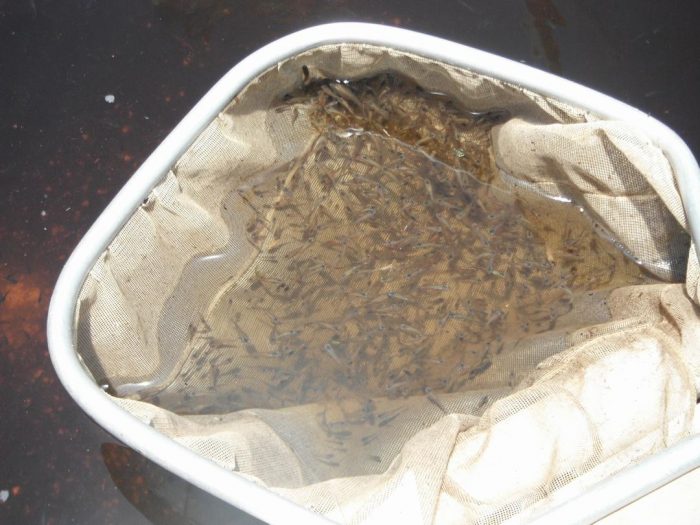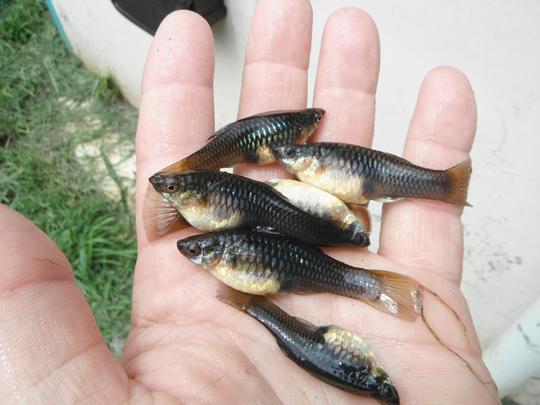Eradicate Mosquitoes With Aquaponics!
Possibly the most important HEALTH benefit of farming aquaponically (that we noticed after our first system was operational for six months) was that the mosquitoes on our seven-acre farm had COMPLETELY disappeared! We live in Hawaii, where there are as many mosquitoes as any other tropical area in the world. Although we are fortunate not to have malaria, typhoid, or any of the other dangerous diseases that are transmitted to humans by mosquitoes, we DO have dengue fever, which can be fatal in the young, elderly, or those with compromised immune systems.
Before we built our first aquaponics system, our farm was like any other place on the green windward coast of the Big Island: even during a drought, when the soil was dusty and dry and there was no standing water visible anywhere, there were still clouds of mosquitoes at dawn and dusk. If we left a door or window open in the house during the day, even for a few minutes, we knew that the buzzing of hungry mosquitoes all night long as we tried to sleep would torment us.
Mosquito Fish
When we built our first aquaponics system, we knew we were creating additional habitat for mosquitoes to lay their eggs, so we introduced a few mosquito fish (Gambusia affinis), and neon tetras into our system water. They thrived and spread throughout the systems we built, and soon had become a self-sustaining population numbering in the tens of thousands. Six months later we noticed there were simply no mosquitoes around any longer. It’s easier to notice the presence of a pest than the absence of one, so we’re not certain when the number went to zero, but it was sometime during that six-month period. That was three years ago.
Since then, we’ve had the pleasure to live on a beautiful farm in the tropics that has NO mosquitoes! How does this work? We live in the center of a deadly efficient mosquito trap: every female mosquito in the neighborhood can sense the roughly 50,000 gallons of water in our aquaponics systems, and comes to them to lay her eggs. Each egg hatches into a larva, which is then promptly consumed by one of the hundreds of thousands of mosquito fish in our water BEFORE it can ever develop sufficiently to hatch into an adult mosquito. That mosquito’s bequest of future generations is GONE, down the gullets of little fish who thrive on them and produce even MORE little fish hungry for mosquito larvae.
(Below) Mosquito fish (Gambusia affinis) and neon tetras in a 12” by 12” net, and in the background, the inflow end of an aquaponics trough, where they love to hang out.
We don’t know what the effective radius of our mosquito eradicator is; we’ve gone to the corners of our seven-acre property and found no mosquitoes there; there’s a good chance it is significantly reducing mosquito populations on the farms around us. We need help and funding to continue research into this phenomenon in order to understand it better, and to develop it to the point where it can easily be implemented in any location or culture. This could make a huge difference in the lives of people worldwide who currently lose family members to malaria and other mosquito-borne diseases.
IMPORTANT! If you live where there are mosquitos, having mosquito fish in the troughs are necessary unless you want to get eaten alive by mosquitoes. We have Gambusia affinis, (normal mosquito fish), and two or three varieties of what we think are neon tetras, with big colorful red and blue tails that are as long as their bodies. We threw 20 in our system hydroponics troughs a month after startup and now there are thousands in each Make sure you REALLY get mosquito fish, and not some baby piranhas or vegetarians that will eat your plant roots!
We started a small aquaponics system but didn’t remember to put any mosquito fish in it until it was fairly mature. We noticed the plant roots had a greenish-brown crud on them, and that the plants weren’t growing as well as our other systems. One of our interns said “why don’t we try putting mosquito fish in; there aren’t any”, so we did. We noticed the roots become cleaner over a three-day period until they were the same off-white color as the roots in our other systems, and the plants also were visually more vibrant and robust within a week. On the basis of this observation we concluded that besides eating mosquito larvae, they appear to clean and debride the vegetable roots, assisting in better vegetable growth.
It’s possible you could have too many mosquito fish. A friend of ours built a very small (2 square feet of raft area) aquaponics system and used mosquito fish in the trough to power the system. This system had a Plexiglas window into it so he could observe the fish’s behavior. Even though he fed the mosquito fish regularly, they ate plant roots also! He noted them eating several different species of plant roots, some of them to the point where the plants died.
In addition, a student of ours observed mosquito fish voraciously devouring the roots of a large raft of watercress in his system to the point that the watercress started dying. What’s really interesting about this is that he got his inoculant water, his tilapia, his mosquito fish, AND the watercress from us. In our systems (which have about 10°F warmer water than his system), the mosquito fish don’t TOUCH the watercress roots. This seems to be a perfect example of how aquaponics systems perform QUITE differently with variations in their environment.
So we know there can be situations where too many mosquito fish can cause harm to an aquaponics system’s plants. We are experimenting with ways to keep mosquito fish populations in the troughs down to the minimum size necessary for good mosquito control in order to minimize plant root damage by these fish. If you feel you’re having trouble with mosquito fish eating your plant roots, a simple way to control them is to net the mosquito fish out of a trough every couple of weeks and feed them to the cat J.
| Unmistakable Gambusia affinis or mosquito fish. These are HUGE females with eggs, most mosquito fish are half this size. |

Everyone loves it when individuals get together and share ideas.
Great site, keep it up!